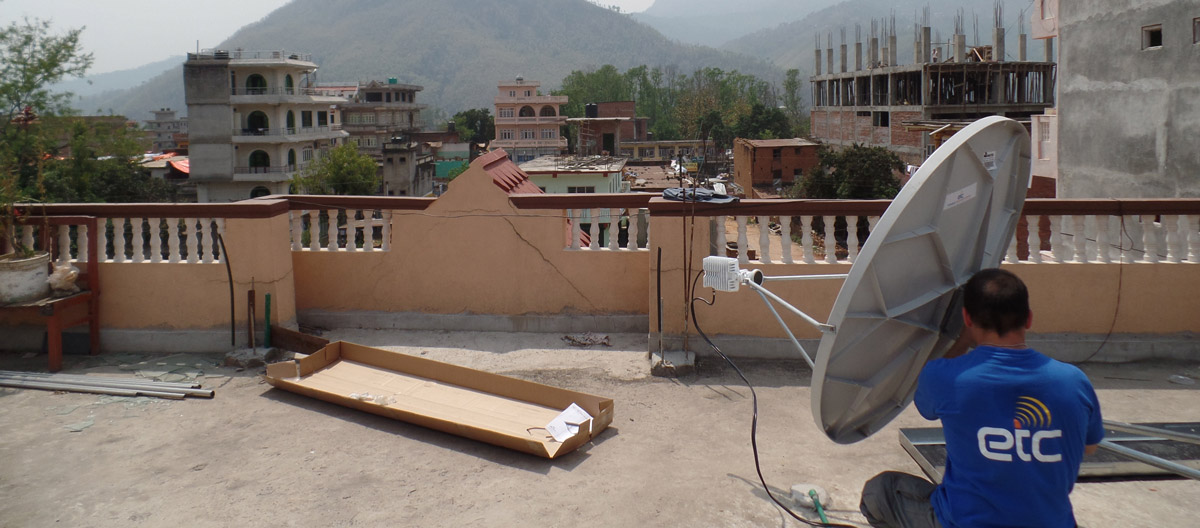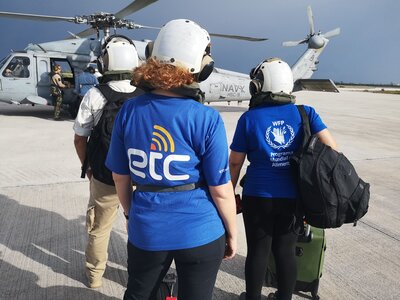Emergency Telecommunications Cluster
- 29 organizations
- from the humanitarian, private and government sectors globally work together to provide shared communications services in emergencies under the Emergency Telecommunications Cluster (ETC)
- Over 40
- humanitarian emergencies responded to by the ETC since its establishment
The 29 partners of the World Food Programme (WFP)-led Emergency Telecommunications Cluster (ETC) are on hand within 48 hours to work with local partners and reconnect communities, responding to up to 10 emergencies per year.
In the minutes, days and weeks after a cyclone, earthquake or tsunami, or during armed conflict, actors at all levels require communications connectivity: from the individuals and families affected, to governments who lead and coordinate national relief efforts and the humanitarian organizations who contribute to local response.
From Afghanistan and Iraq, to Haiti, the Philippines and Nepal, for over 15 years the ETC has provided timely, predictable and effective telecommunications services to humanitarians responding to crises.
Examples of ETC services and activities
-
Voice connectivity (telephony)
-
The ETC offers voice communication options for all three of its main users: humanitarian organisations, national and local authorities, and the affected population.
-
Internet connectivity
-
Local broadcaster support
-
Two-way communication between humanitarians and affected communities
-
Security communications systems
-
Training, simulations, and e-learning
-
Localized and global preparedness activities
Related topics
Engage with the Emergency Telecommunications Cluster


